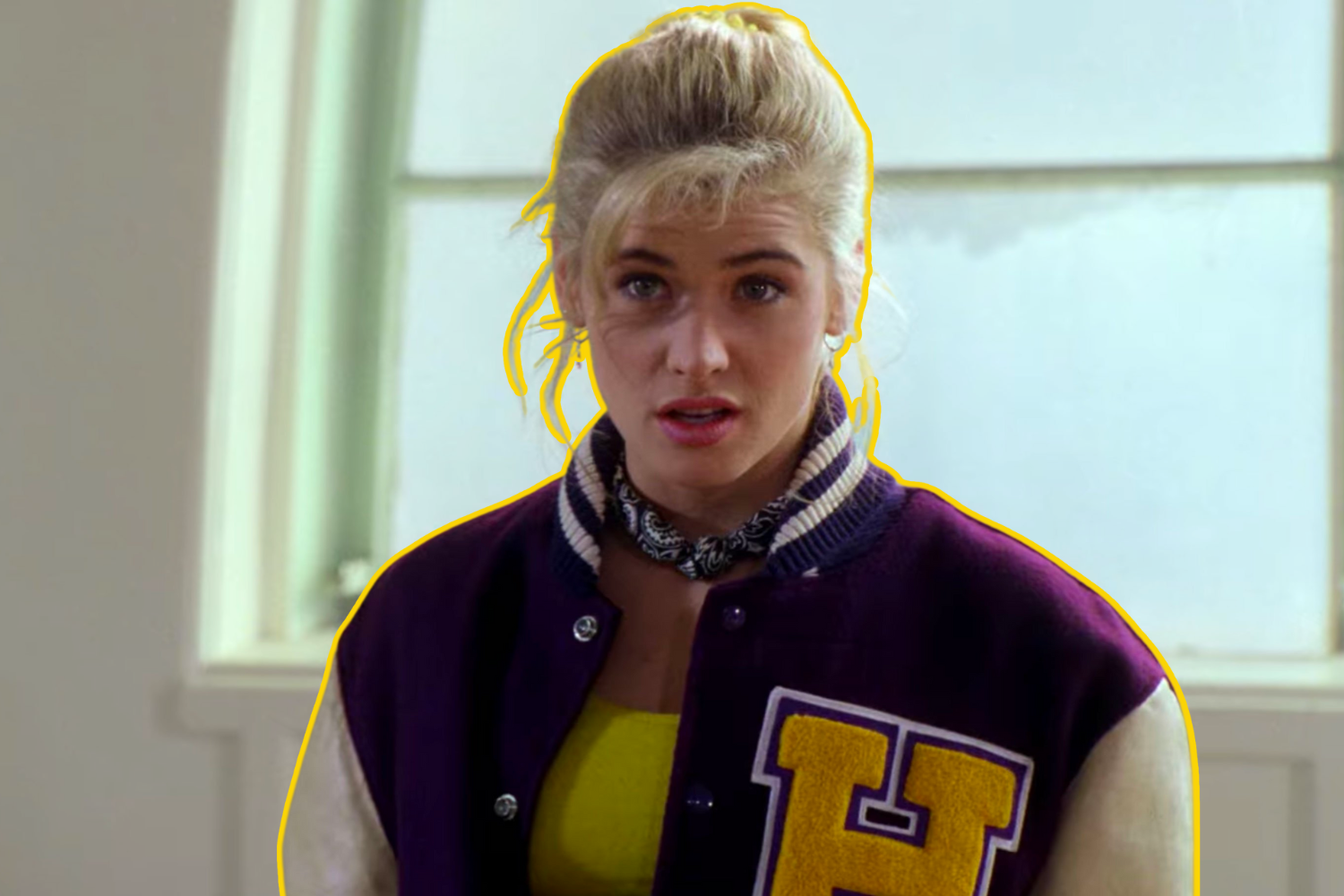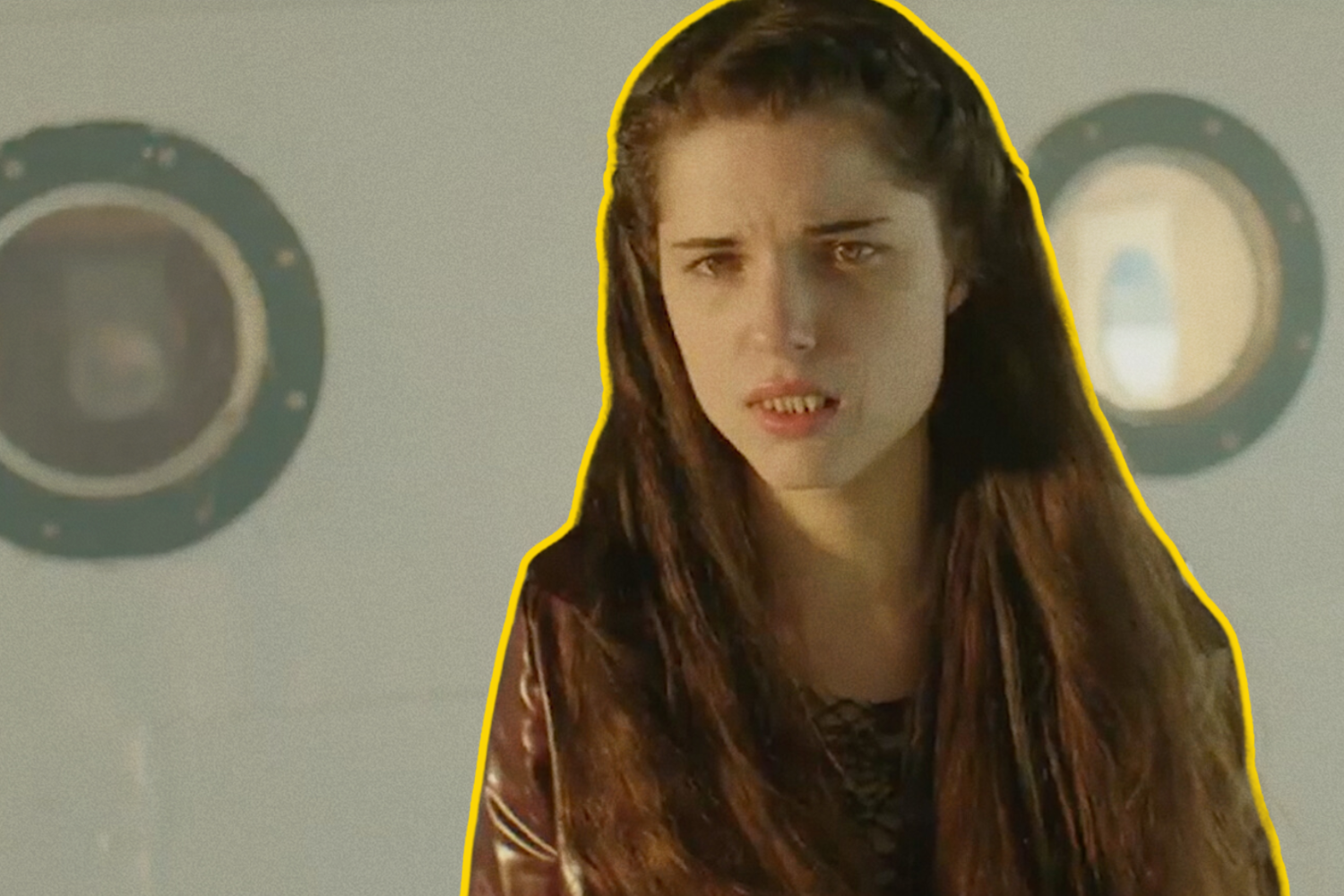Editorials
Coming of Age With ‘Buffy the Vampire Slayer’
Uterus Horror is a subgenre of films that focuses on the experience of growing up with a female gender expression. These films capture the act of becoming an adult and coming into your sexuality, using horror to emphasize and/or act as a metaphor for those experiences. Columnist Molly Henery, who named and defined the subgenre, tackles a new film each month and analyzes how it fits into this bloody new corner of horror.
October 31st, 2023 | By Molly Henery

Uterus Horror films tend to explore some very serious themes. Even when there is a comedic edge, the plots typically lean into the grave and gruesome parts of growing up as a young woman. This makes it refreshing when a Uterus Horror film can lean into the lighter, campier side of becoming an adult. Director Fran Rubel Kuzui (Tokyo Pop) does just that in the 1992 cult classic Buffy the Vampire Slayer.
While most horror fans are sure to be familiar with the hit TV show of the same name, which ran for seven seasons from 1997 to 2003, this film is where it all began. Buffy the Vampire Slayer tells the story of Buffy Summers (Kristy Swanson), a popular high school senior and cheerleader. When the audience first meets Buffy, it’s clear she cares far more about shopping, hanging with her friends, boys, and herself than she does anything else. That is until she meets a strange man named Merrick (Donald Sutherland). With his guidance and training, Buffy discovers she is one in a long line of slayers, young women throughout time who have been chosen as the one line of defense humanity has against the vampire hordes. Buffy must train with Merrick to hone her impressive strength and agility for the ultimate battle against evil, all while trying to balance her life as a typical teenage girl.
Sign up for the free Certified Forgotten newsletter on Substack
Buffy the Vampire Slayer is a unique take on Uterus Horror. Typically, the young women featured in this subgenre are outcasts in some way. Buffy, on the other hand, is a very popular teen, and, for the most part, she appears to be quite grown up. While she certainly isn’t academically or intellectually inclined, she is confident in who she is and has a steady boyfriend with whom she is very likely sexually active. For all intents and purposes, she’s already gone through the process of becoming an adult, albeit a rather vapid one. Yet, from the moment Buffy meets Merrick, she realizes she never really knew who she was.
Buffy’s first transformation is a physical one, but that physical transformation is on the inside rather than the outside. She’s always been athletically inclined, participating in gymnastics when she was younger and eventually becoming a cheerleader. Little did Buffy know that these abilities that came so easily to her were due to her slayer powers. With the help of Merrick’s training, Buffy harnesses her agility, strength, and speed to become a vampire killing machine, powerful enough to take on the vampire master, Lothos (Rutger Hauer). While these abilities were always inside Buffy, it took learning the truth about being a slayer for her to reach her true potential.
One aspect of Buffy’s powers that didn’t make it to the TV show was her unique ability to sense when a vampire is near. The first time Buffy meets Merrick, he convinces her to go to a graveyard with him so he can show her that vampires are real. As they enter the cemetery, Buffy winces in pain and grabs her abdomen. Merrick asks her if she has cramps, but Buffy is understandably annoyed — and mildly disgusted — this adult man she just met is asking her such a personal thing. Not long after, two newly changed vampires emerge from their graves. As her training continues, this bizarre ability shows again when Buffy lures a vampire into an alley to kill it. As Merrick and Buffy go over the hunt, like a football coach reviewing a previous game with the team, Merrick brings up the cramps again. After Buffy comments that her period isn’t due for a couple of weeks, Merrick explains the cramps are her own internal alarm system. It’s a way for her body to warn her evil is nearby.
The other half of Buffy’s growth throughout Buffy the Vampire Slayer is mental and emotional. When the audience first meets Buffy, she is entirely self-centered. She has friends who are just as shallow as she is, and she’s dating a popular basketball player who treats her more like a toy than a human being. Buffy couldn’t possibly care less about her education or anything happening in the world that doesn’t involve her. Everything changes when Buffy learns she’s a slayer. There is all this generational trauma and responsibility dumped into her lap without warning. For much of the film, Buffy struggles to balance the life she had as a normal teenager with her newfound prophetic obligations in the fight against evil, constantly being pulled in opposing directions.
Cracking under the pressure of being the slayer, Buffy rebels against her training and duties. Unfortunately, by this time, her relationships with her friends had already fractured. She couldn’t confide in them why she’d been absent, and even if she could, they would never understand what Buffy was going through. Her friends ultimately abandon her, and her boyfriend breaks up with her over her answering machine (if you’re younger, you might have to Google that one). Buffy also didn’t feel she could go to Merrick for guidance. His sole focus was to make Buffy the best possible slayer to take on Lothos, so in his mind, all else was just a frivolous and unnecessary distraction.
There is one person Buffy can vent to: Pike (Luke Perry). While at first, the two hate each other – Buffy being a rich valley girl and Pike being a poor alternative kid – they eventually form a strong bond. Pike had his own unexpected encounter with vampires, which gives him a unique insight into what Buffy is faced with. Their connection is deeper than any relationship Buffy had before, with perhaps the exception of Merrick. The first time Buffy comes face-to-face with Lothos, it results in Merrick’s tragic death. This moment shakes Buffy and makes her face the gravity of the eternal battle she was thrown into. She shuts down and shirks her slayer responsibilities, instead going to the senior dance. Even though Pike is initially angry with Buffy for this, he still comes through for her and shows up to the dance (armed with some homemade wooden stakes, just in case). It shows how both Buffy and Pike experienced growth, becoming more mature and emotionally intelligent young adults.
The final showdown between Buffy and Lothos at the senior dance highlights how much Buffy has changed. With a bunch of recently deceased seniors threatening the dance and ready to suck some blood, Buffy slips past them to confront Lothos. At first, she seems as unprepared to battle him as she did when Merrick was killed. But as Buffy states in the film, she has something the other slayers didn’t — her keen fashion sense. Over the centuries, slayer after slayer fell at Lothos’s hand. However, Buffy proves to be the first worthy adversary by not only embracing her destiny as a slayer but also by embracing the person she was before. It’s this balance of the past and present that allows Buffy to be the most quick-witted, stylish, and deadly vampire slayer ever to exist. Lothos didn’t stand a chance.
Buffy the Vampire Slayer is a fun piece of Uterus Horror that uses comedic camp, along with vampiric battles, to tell the story of a typical teenage girl reaching her physical potential and maturing into an adult. In many ways, Buffy’s journey is similar to the films previously discussed in this column. She goes through a physical transformation, admittedly an internal one, and she emotionally matures to look beyond herself. Her ability to adjust to her new destiny and adapt it to her modern sensibilities makes Buffy stand apart from other slayers and the other young women of Uterus Horror.



